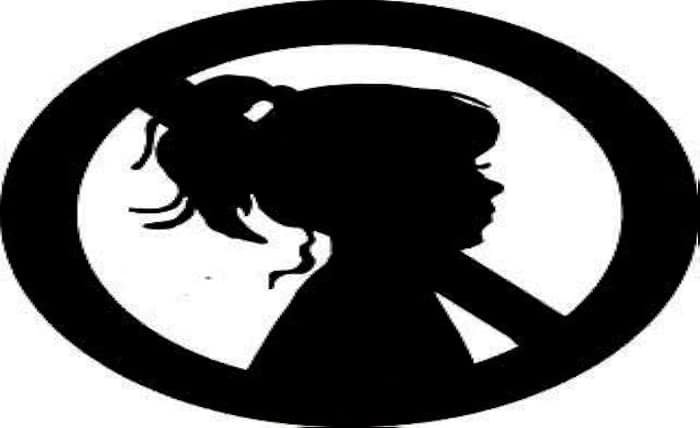The “No Girls DP” Phenomenon: A Deep Dive into the Trend

“No girls DP” refers to social media profile pictures that do not feature female images or representations. This trend often emerges in particular cultural or social contexts, where people prefer to use generic symbols, memes, or other imagery instead of featuring women in their profile pictures.
By understanding the origins and interpretations of “no girls DP,” we can better appreciate why this term resonates with certain online communities and individuals.
Why is “No Girls DP” Popular?
The popularity of the “no girls DP” trend can be attributed to several factors:
- Cultural Norms: In some regions, societal expectations or traditional views discourage using female imagery on public platforms.
- Privacy Concerns: Many individuals, especially in conservative areas, avoid displaying women’s faces due to privacy or security reasons.
- Meme Culture: Over time, the term “no girls dp” has been embraced by meme creators, adding humor and relatability to the idea.
This combination of cultural, social, and online influences explains why “no girls DP” has become a recognizable phrase in certain circles.
The Social and Cultural Context Behind “No Girls DP”
Understanding the social context of “no girls DP” involves examining its cultural roots:
- Conservative Communities: In more traditional societies, publicly displaying female images might be considered inappropriate or invite unwanted attention.
- Online Anonymity: Many users prioritize anonymity, choosing not to use personal photos at all.
- Symbolic Representation: Instead of personal photos, users opt for landscapes, abstract designs, or popular icons that convey their identity without featuring a girl’s image.
The “no girls DP” trend reflects a blend of cultural values, personal choices, and online community standards.
Common Misconceptions About “No Girls DP”
While “no girls DP” might sound straightforward, there are a few misunderstandings about what it entails:
- Not Anti-Women: The phrase doesn’t necessarily mean the user opposes women; it’s often about respecting privacy or following cultural norms.
- Not a Universal Practice: “No girls DP” is more prevalent in specific regions or among particular groups, rather than a global phenomenon.
- Not Always Deliberate: Some users may simply prefer abstract or symbolic profile pictures, without making a conscious choice to exclude women.
Clarifying these points helps paint a more accurate picture of what “no girls DP” truly means.
How “No Girls DP” Impacts Online Interactions
The “no girls DP” trend influences the way people interact on social platforms:
- Anonymity and Freedom: Users with abstract or non-personal profile pictures often feel freer to express themselves.
- Reduced Stereotyping: Without a visible gender marker, interactions might be based more on content than appearance.
- Community Building: Some groups use “no girls DP” as a shared cultural marker, creating a sense of belonging.
While not universally adopted, this trend affects the dynamics of online communication in interesting ways.
Criticism and Controversy Around “No Girls DP”
As with any trend, “no girls DP” has faced its share of criticism:
- Perceived Exclusion: Some argue that avoiding female imagery perpetuates gender imbalance.
- Misinterpretation: Critics may misread the trend as a deliberate statement against women rather than a cultural practice.
- Online Trolling: Certain communities misuse the term for memes or jokes that can be misinterpreted as hostile.
Despite these controversies, the phrase continues to be used in various online contexts, often more lightheartedly than maliciously.
How to Respond to “No Girls DP” Trends
If you encounter the “no girls dp” phenomenon, consider these approaches:
- Respect Cultural Contexts: Understand that for many, it’s a personal or cultural choice.
- Ask Questions, Not Assume: If you’re unsure why someone uses a generic profile picture, politely inquire rather than jump to conclusions.
- Engage Positively: Recognize that this trend often reflects broader cultural dynamics and isn’t inherently negative.
By engaging thoughtfully, you can better understand and appreciate the reasons behind the “no girls DP” trend.
Conclusion
The “no girls DP” phenomenon highlights the intersection of culture, privacy, and online identity. While it may seem like a simple trend, its deeper roots reveal much about societal norms, digital communication, and personal preferences. By exploring its meaning, impact, and cultural context, we gain insight into how people navigate their identities in the digital age.
FAQs
1. What does “no girls DP” mean?
It refers to profile pictures that don’t feature female images, often chosen for cultural or privacy reasons.
2. Is “no girls DP” an anti-woman statement?
Not necessarily. Many users adopt this trend due to cultural norms, privacy concerns, or personal preference, rather than any opposition to women.
3. Why do people use “no girls DP”?
Reasons include cultural values, privacy concerns, anonymity, and personal choice to represent themselves differently online.
4. Is “no girls DP” a global trend?
No, it’s more common in specific regions or communities rather than universally embraced.
5. How does “no girls DP” affect online communication?
It can promote anonymity, reduce stereotyping, and sometimes foster a unique sense of community among certain groups.





